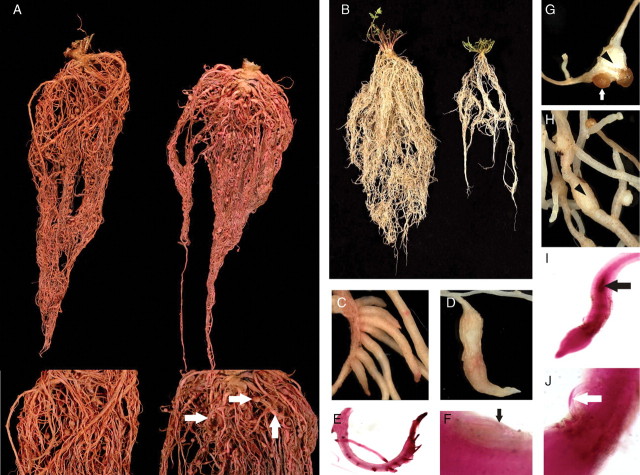Fig. 3.
Responses of Lotus japonicus ecotypes to Meloidogyne incognita. (A) Infected root systems of a highly susceptible ecotype, MG-96 (right), and a resistant ecotype, MG-55 (left), and at higher magnification (lower panel) showing severe galling (arrows) in ecotype MG-96 and virtually no galls in ecotype MG-55. (B) Visible morphological differences between root systems of two L. japonicus ecotypes used in this study. (C–E) Lotus japonicus ecotypes showing abnormal root swellings (C, D) and necrotic tips and deformation of the lateral roots (E) after RKN infection. (F–H) Normal development of M. incognita nematodes in L. japonicus roots: (F) fourth stage juvenile of M. incognita inside root (arrow), and (G, H) galls (arrowheads) with egg masses (arrow) attached to mature females. (I, J) Necrosis (black arrow) in ‘pendulum-like’ swelling of the tip of lateral roots (I) associated with nematodes partially embedded in roots (J).

